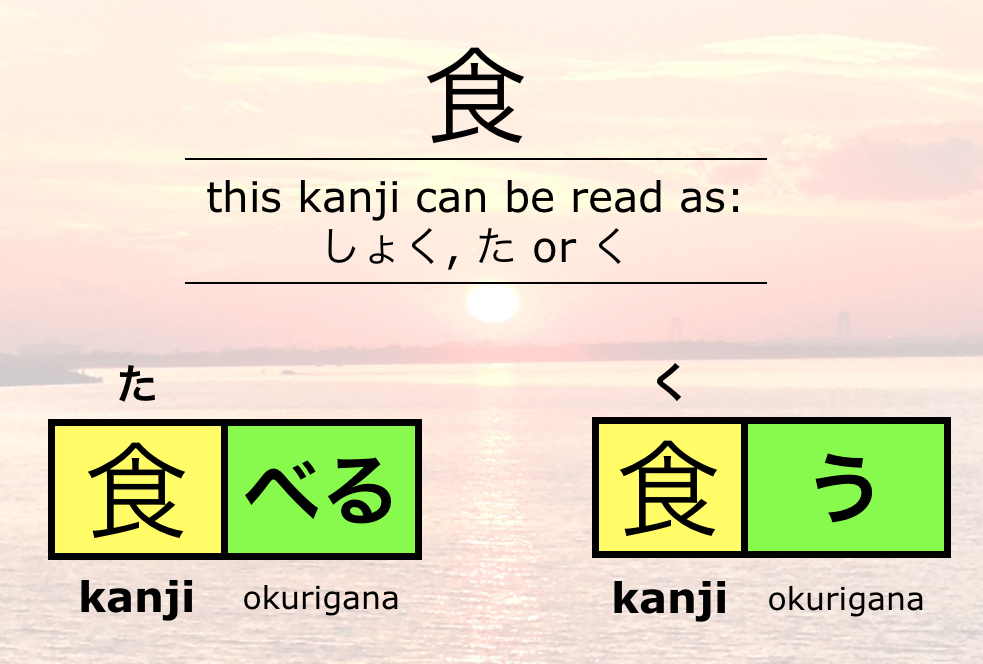As you progress with your Japanese studies, you will see two very important kinds of Hiragana. They are called okurigana and furigana. In this post let’s take a look at each of them and how they both will help you read Kanji!
Furigana
Furigana is, very simply, the Hiragana that you will sometimes see written above a Kanji character (or characters) that tells you the reading of each character. Here is an example:

Whether or not you see furigana depends on a few different factors:
- the intended readers
- the rarity of the Kanji
Generally, you won’t see many examples of furigana. However, if you pick up a book/novel intended for elementary-aged children, you might see lots of furigana. This is because (like us!) they either haven’t learned the Kanji’s readings or the writer intended the Kanji to be read in a certain way.
Some websites, books, IG posts, Youtube videos, etc that are intended for non-Japanese readers will also have a fair amount of furigana. Granted, it is helpful at first, but it’s a good idea to wane yourself off of furigana as you get better (or if you WANT to get better). The more you see a Kanji character, the more likely you are to remember its reading.
Rare Kanji
This will come up in the Kanji section, but there are characters that are considered “everyday Kanji”. If a character is not one of these, you are likely to see furigana. Even some Japanese natives may not be familiar with them so it’s considered good form to help those who need it read the character. This also happens with rare Japanese names written in Kanji.
Okurigana
While furigana sometimes appears above Kanji, there are also Hiragana characters that ALWAYS appear after a Kanji character. This is called okurigana. Here is an example:

The okurigana tells you how you should read the 食 Kanji. In this particular example, both words mean “to eat” so mixing them up is kind of alright. Other times, however, the meanings will be drastically different so okurigana is a vital part of Japanese.
No Help
Of course, Japanese being Japanese, sometimes there are curveballs. Take a look at the following two sets of words:

As you can see (with the help of the furigana!) BOTH the Kanji and the okurigana are the same. If it weren’t for the furigana, you might not know which reading of the kanji to use. In this situation, they both mean “to open” but the way and the kind of opening is different. Japanese often separates meanings by using different Kanji. In English, we just take it for granted that you can open your eyes and you can also open a door. In Japanese, they are two different kinds of actions, and so different Kanji are used. (It won’t matter when you speak, but when you write or type, it would be good to be aware of the difference.)
Okurigana List
Here are some
- い
- かった
- ければ
- く
- くない
- くて
- ない
- れる・られる
- せる・させる
- ます
- たい
- ば・れば
- る・られる
- う・よう
- た・だ
- て・で
- だ
- だった
- なら
- です
- でした
- でしょう
- である
Conclusion
As you can see, both furigana and okurigana will help you when it comes to reading Kanji. Sometimes you will have both, other times there will only be okurigana. Later on in the Kanji section, we will take a look at other ways to help you guess a Kanji’s reading.
Until then, good luck with your Japanese journey!


